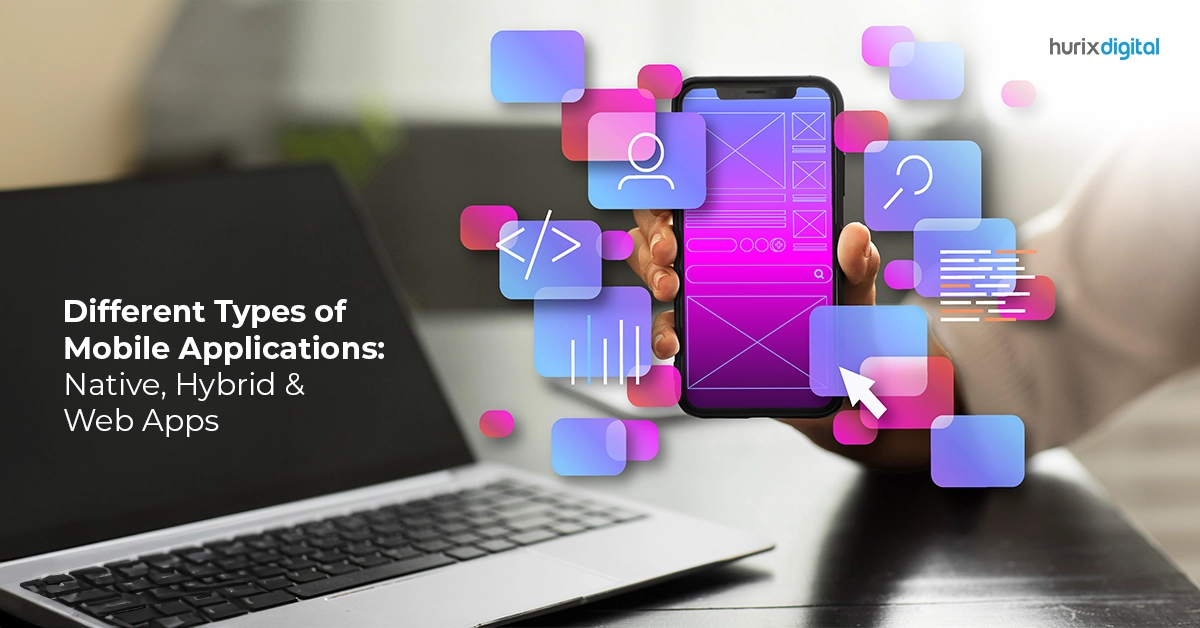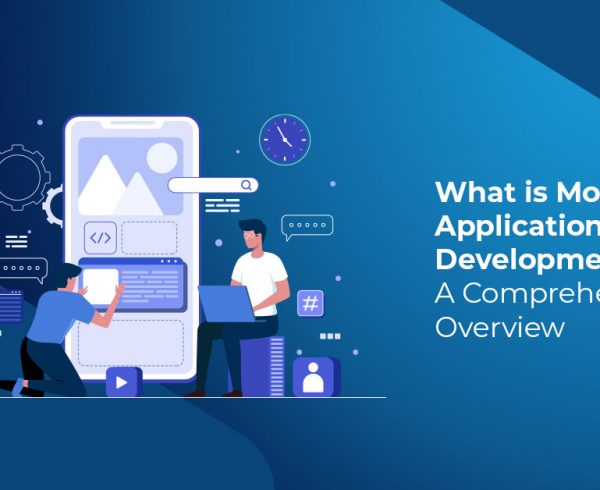Summary
This article gives a brief understanding of the different types of mobile applications. You can now choose the right type of mobile application to enhance your customer experience.
Welcome to the world of smartphones, where mobile applications have made it easy to do things on the go. There’s an app for everything, from buying groceries and reading the news to playing games and listening to music.
The number of global mobile app downloads in 2022 was 255 Billion, up by more than 80% from 140.7 Billion downloads in 2016. The revenue from mobile applications is estimated to reach over $ 613 Billion in 2025.
With the ever-growing number of app downloads, the app industry is constantly evolving and rolling out different types of apps to enhance the user experience. As the app industry is committed to launching smarter apps, companies must stay updated on new technologies to provide a richer customer experience.
In this article, we’ll walk you through different types of mobile apps to help you choose the right fit for your business.
Table of Contents:
- Three Types of Mobile Applications
- Custom Mobile App Development: How to Select the Best Mobile Application Type?
- Wrapping Up
Three Types of Mobile Applications
To succeed in the world of apps, understanding app dynamics in depth becomes paramount. You may have read about a mobile app designing company helping brands develop native applications. Or you might have heard about mobile application development services for hybrid or web apps.
But what do these terms mean? Let’s find out!
1. Web Apps
Web applications are responsive websites that do not require any installation process or storage space to use the app. They can be accessed through internet browser windows, such as Safari or Chrome, either from mobile phones or desktops.
Web mobile application companies use HTML/CSS, Ruby, JavaScript, and similar programming languages to develop web apps. They require an active internet connection to function. These apps update themselves on the web-hosted servers, eliminating the need to update the web application manually.
Pros:
- Lower development cost and easy user maintenance
- Easy accessibility as users can access web apps from anywhere
- No approval of the app store or app marketplace
- No installation is required, and always up-to-date
Cons:
- Requires powerful internet connection as web apps don’t work when users are offline
- Limited functionalities and lack of device features such as push notifications and location tracking
- More complex user experience as it takes more steps to access the web app
- Web applications tend to be less interactive, slower, and less responsive than native apps.
Testing:
For web apps, testing must include cross-browser compatibility check to ensure smooth user experiences. It also requires careful attention to responsive design – how the application adjusts to different screen orientations and sizes. Automated testing tools like Selenium can be used for web app testing.
2. Native Apps
Native apps are developed for a particular operating system (OS) or one specific platform. They can be downloaded from various app marketplaces.
A custom mobile app development company uses Java and Eclipse to design Android native apps, while iOS native apps are written in Swift and Objective-C. As these apps are specifically built for just one platform, you cannot mix and match – for example, iOS apps cannot be used on Android phones and vice versa.
Native apps let you interact with a phone’s internal hardware and API (Application Programming Interface), allowing your business app to access features like the device’s microphone, user contact lists, cameras, device location tracking, and more.
Pros:
- Fast, superior, and reliable performance
- More optimized and interactive customer experience
- Faster to configure and fewer compatibility issues
- Works offline and requires fewer hardware resources for coding
- Better use of the device’s operating system functionalities
Cons:
- Developing similar apps for different operating systems is expensive and time-consuming
- Requires experienced app developers as OS-specific programming languages like Java and Swift are difficult to learn
- Minimum code reusability, which means the code built for one platform cannot be reused on another.
- Requires a separate codebase to include fresh native features
Testing:
Native app testing must cover the app’s functionality and compatibility with different device hardware and OS versions. They must be tested on the particular OS they’re developed for. Tools such as Espresso or Appium can be used to expedite the process.
3. Hybrid Mobile Apps
Hybrid mobile app development combines techniques for both native and web apps. Hybrid apps can be accessed using browsers and downloaded on smartphones.
They are designed using Javascript, Angular HTML, and CSS web technologies. The hybrid apps are developed on a single platform to work across devices running different operating systems.
They are available on multiple app stores like Apple’s app store and Google Play Store. Hybrid apps are the best option when you don’t require full device access and high-performing apps.
Pros:
- Standard web technologies are used for quicker, easier, and more economical development
- Ideal for countries having slow internet connections, as hybrid apps can work offline
- Easy internal API access to device features like push notifications and location tracking
- Easy to add new features as hybrid apps are built using a common codebase
- Cheaper than native applications due to shareable code
Cons:
- Complex apps with multiple functions lack speed and power
- Do not run on older browser versions
- Inconsistent user experience and less interactive compared to native apps
- Performance is a little compromised as hybrid apps cannot perform OS-specific tasks
Testing:
For hybrid apps, testing must ensure that the app utilizes the device’s resources efficiently and functions appropriately on every target platform. Tools like Appium can be used to automate the process.
Check it out: Why Hurix Custom Mobile App Development is Worth the Investment: 5 Benefits You Can’t Ignore
Custom Mobile App Development: How to Select the Best Mobile Application Type?
Choosing the right type of mobile phone app can be challenging and complicated. Several factors must be taken into account before making a decision. These include the project’s need, device features, speed, offline functioning, installation, development cost, maintenance, user interface, and more.
Audience targeting is another vital aspect to be considered. A web application will be a better choice if your audience uses multiple devices and has constant high-speed internet access. On the contrary, if they have restricted data availability and prefer to use the application offline, a hybrid or native app will be more suitable.
Also Read: 6 Expert Tips for Creating a Unique and Successful Mobile App
Wrapping Up
To sum it up, web, native, and hybrid apps each have their strengths and weaknesses. There is no unique best solution, and the choice depends on the purpose, requirements, and features of the app you’re developing.
We hope that you’ve now got a clear understanding of these apps. Use this information to select and test the apps thoroughly before launching them. If you’re looking for the best mobile app developers, get in touch with Hurix Digital today!
From coding environments to hosting technologies and deployment, Hurix Digital can help you in each step of your mobile application development process. We have a team of seasoned professionals who can help you implement features like user engagement, push notifications, reminders, and more to deliver the best user experience possible.
For more information on our mobile development services, visit our official website or schedule a demo.







